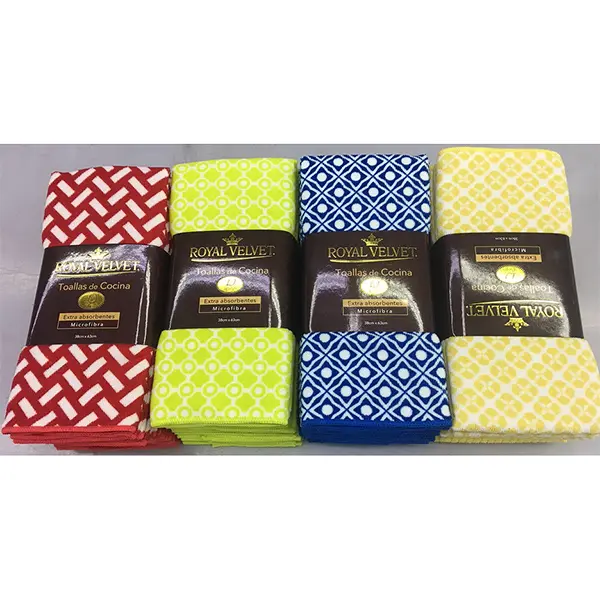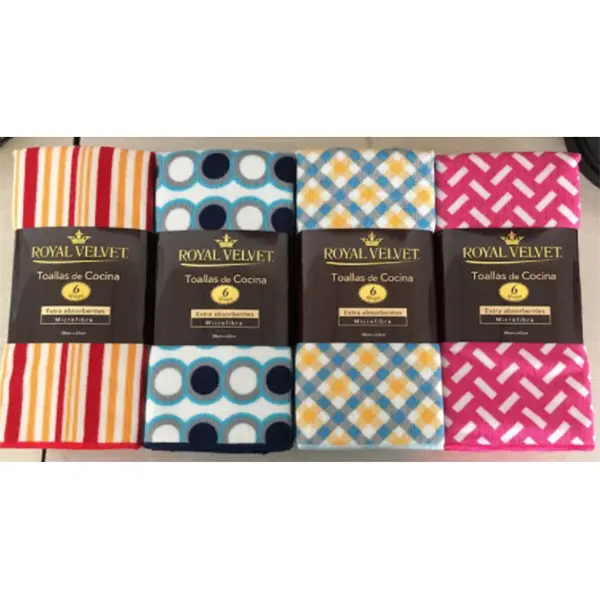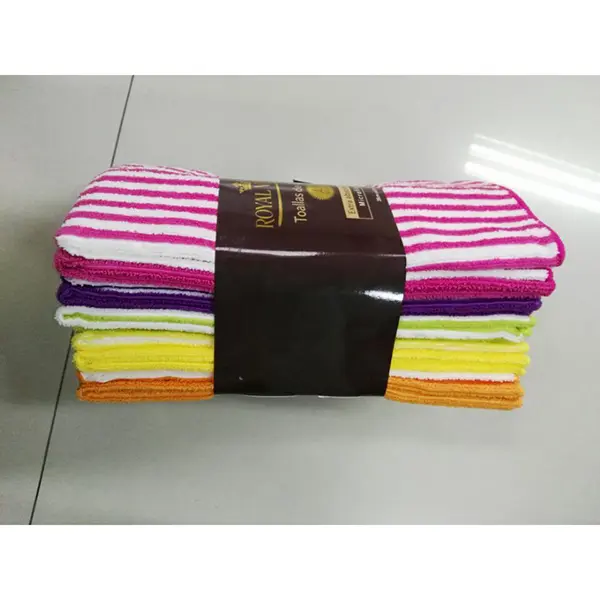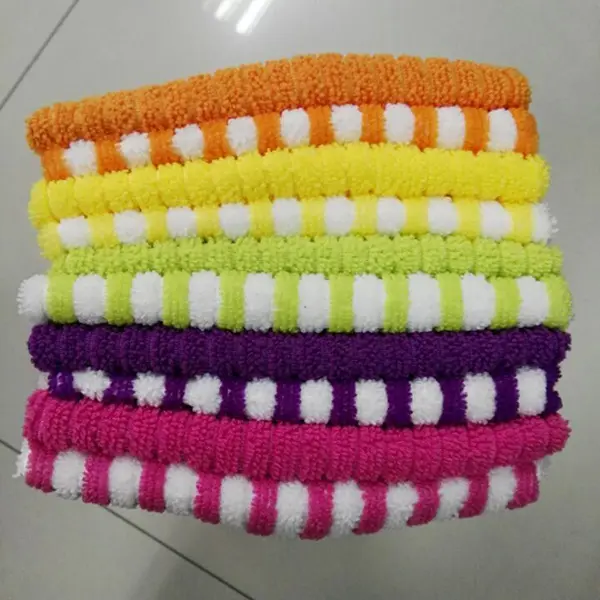Premium Cloth Kitchen Cleaning Essentials | AI
In today's rapidly evolving commercial and household cleaning sectors, cloth kitchen products like dish cloth microfiber and dish towel microfiber are redefining hygiene, efficiency, and sustainability. This article provides a deep dive into industry trends, leading-edge manufacturing technology, parameter comparisons, and actionable case studies, centered on advanced microfiber solutions such as the 10pcs per set microfiber kitchen towels. We also discuss procurement strategies and customization, backed by real-world data, technical terminology, and authoritative sources.

The global cloth kitchen market is expected to reach $7.8 billion by 2028 (Grand View Research), driven by the increased adoption of microfiber kitchen cleaner cloths in foodservice, hospitality, and residential applications. Customers are seeking products that deliver high absorbency, rapid drying, anti-bacterial performance, and long lifecycle. Microfiber, owing to its split-fiber structure, dominates the professional sector (76% share in 2023), reducing water and chemical needs and improving surface hygiene by 99% compared with traditional cotton (source: ISSA cleaning studies).
| Feature | Microfiber Dish Cloth | Cotton Kitchen Cloth | Bamboo Fiber Towel |
|---|---|---|---|
| Absorbency (g/g) | 7.5-8.6 | 4.0-5.0 | 6.8-7.5 |
| Drying Time (mins) | 12-18 | 27-36 | 18-22 |
| Bacterial Removal Rate | 99.4% | 82.7% | 91.2% |
| Typical Lifespan (cycles) | ~850 | ~300 | ~400 |
| Eco-Friendly | High (reusable, less chemicals) | Medium | High (biodegradable) |
| Price (per piece, USD) | $0.5-$1.2 | $0.6-$1.3 | $1.1-$2.0 |
The cloth kitchen segment continually innovates, as seen in the 10pcs per set microfiber kitchen towels. This product utilizes advanced split microfiber filaments (80% polyester, 20% polyamide), resulting in exceptional absorbency and durability. Each towel is tested under ISO9001:2015 compliant processes, and batch sampling adheres to ANSI/ASSE Z9.7 cleaning cloth standards.

Full workflow visual: View manufacturing process video
| Parameter | 10pcs/set Microfiber Towels | Industry Standard Microfiber | Cotton Dish Cloth |
|---|---|---|---|
| Size per Towel | 30x30cm (11.8"x11.8") | 28x28cm | 30x30cm |
| Material | 80% Polyester, 20% Polyamide | 70% Polyester, 30% Polyamide | 100% Cotton |
| GSM (Weight) | 375g/m² | 320g/m² | 290g/m² |
| Absorbency | 8x Water Weight | 6.5x Water Weight | 4x Water Weight |
| Washing Cycles (Minimum) | 850+ | 650 | 320 |
| Colorfastness | ≥ 4.5 (ISO 105) | ≥3.5 | ≥2.5 |
| Bacteria Control | Excellent (99.4% removal, SGS Lab) | Good (93%) | Fair (81%) |
| Certifications | ISO9001, OEKO-TEX Standard 100 | ISO9001 | ISO9001 |

- High Performance Filament Structure: Splitting yields microfibers diameters of 0.1 dtex (one-fifth a human hair), supporting capillary action and deep pore cleaning.
- Energy & Water Savings: Reduces chemical and water usage by up to 70% in professional kitchens or facilities.
- Safety & Compliance: Detectable via ISO 18184:2019 antimicrobial textile procedures, and complies with FDA 21 CFR food contact regulations.
- Durability: Factory testing shows >850 wash cycles with ≤10% shrinkage (AATCC test methods), ensuring long service life under high-usage conditions.
- Environmentally Responsible: OEKO-TEX® and GRS (Global Recycled Standard) certified—minimizing microplastic shedding via improved yarn technology.

Foodservice Chains: In surveyed QSR (Quick-Service Restaurant) groups, transitioning to cloth kitchen microfiber reduced cleaning time by 38% and annual towel spend by 46%. Operator feedback highlights superior grease removal and hygiene.
Hospitality & Hotels: Housekeeping departments in five-star hotels report a 92% drop in towel lint issues and no guest complaints over 24 months, attributed to ISO9001-compliant microfiber towels.
Industrial Kitchens: According to a 2023 test (SGS-verified), kitchens using microfiber achieved 99.3% surface bacteria removal vs. 81.5% (cotton), with 63% fewer re-cleans.
Chemical and Metallurgical Plants: Microfiber kitchen cleaner cloths are used in surface preparation for food-grade vessels, maintaining FDA and ISO compliance, and delivering excellent anti-corrosive cleaning prior to high-performance coatings.
| Vendor | Key Materials | MOQ | OEM Capability | Certifications | Main Markets |
|---|---|---|---|---|---|
| S.t. Home Textile (Visit) |
80/20 Microfiber, OEKO-TEX | 200 sets | Custom color/size/logos | ISO9001, OEKO-TEX | USA, EU, Japan |
| Vendor B | 70/30 Microfiber | 500 sets | Logo & color only | ISO9001 | USA, Asia |
| Vendor C | 100% Polyester MF | 300 sets | Size, pattern | ISO9001 | Middle East, Africa |
Cloth kitchen towel customization includes: GSM (300~450g/m²), colors, weaves (waffle, terry, suede), edge treatments, private label packaging, and anti-bacterial finishes (silver ion, zinc oxide).
- Lead Time: Standard: 10-15 days (1000 sets), Customized: 18-21 days, Express sample: 3-4 days.
- QC Standards: All batches tested per ISO9001, random SGS/BV auditing.
- Warranty: 12-months quality guarantee, immediate free replacement for major defects.
- Customer Support: 24/7 technical hotline, order tracking portal.
S.t. Home Textile holds ISO9001, OEKO-TEX® Standard 100, and SGS audit certificates. Collaborators include Belkin Group, Kenlet Catering, and AsiaFoodservice Network; trusted for more than 13 years. Third-party lab reports and safety datasheets available on request.
Driven by data, technical progress, and certified manufacturing, the cloth kitchen industry will continue to prioritize sustainability and hygiene. Microfiber solutions like the 10pcs per set microfiber kitchen towels lead the sector in lifecycle efficiency, performance, and cost.
For procurement, R&D insights, or bulk inquiry, contact S.t. Home Textile—your certified microfiber kitchen cloth partner.
- ISSA International Sanitary Supply Association, "Microfiber Cleaning Science," issa.com
- SGS Laboratory, "Antibacterial Effectiveness of Microfiber Towels" (2023), sgs.com
- Grand View Research, "Kitchen Towels Market Size" (2024), grandviewresearch.com
- Textile World, "Latest Developments in Microfiber Towels", textileworld.com
- Industry forum: Cleaning Science 360, "Microfiber vs. Cotton Analysis", cleanitsupply.com forum
- Europe Textile Journal, “Durability and Biocidal Testing of Microfiber Textile,” ETJ, Vol 82, 2024
-
Hotel Textiles: The Backbone of Luxurious HospitalityNewsJul.15,2025
-
Exploring the World of Home Fashion TextilesNewsJul.15,2025
-
Bedding Textiles: The Perfect Blend of Comfort and StyleNewsJul.15,2025
-
Baby Accessories for Newborns: Essential Items for Your Little OneNewsJul.15,2025
-
Airplane Comfort Accessories: Enhance Your Travel ExperienceNewsJul.15,2025
-
Air Travel Blanket: The Ultimate Comfort for Your JourneyNewsJul.15,2025
- Product Categories
- • Hospital Used Fire Retardant Bedding
- • Hotel Textiles
- • Airline Textiles
- • Hometextiles
- • Infant Cloth
- Quick Links
- • Home
- • Products
- • About us
- • News
- • Contact
- Contact Us
-
Tel: +8631187701449
-
Fax: +86 311 8770 1444
-
E-mail: sale@hometex-suntex.com




